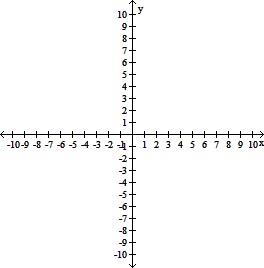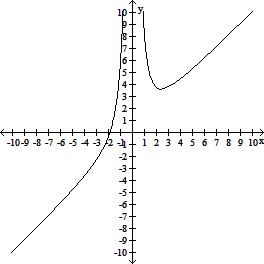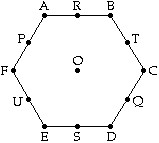Sketch the indicated curve. Find the intercepts. Find any asymptotes. Find any relative extrema and determine the intervals on which the curve is increasing and the intervals on which it is decreasing. Find any inflection points. Determine the intervals on which the curve is concave up and the intervals on which it is concave down.y = x + 

What will be an ideal response?

No y-intercept
x-intercept: (- , 0)
, 0)
Asymptotes: y = x, x = 0
Minimum: 
Decreasing: 0 < x < 
Increasing: x < 0, x > 
No inflection points
Concave up x < 0, x > 0
You might also like to view...
Use exponential regression to estimate the value of 
A. 238.99 B. 239.92 C. 24.53 D. 26.01
The figure below is a regular hexagon ABCDEF with center O. (P, Q, R, S, T, and U are the midpoints of the sides.)
 A glide reflection sends the point P to the point Q and the point U to the point T. The axis of reflection for this glide reflection is
A glide reflection sends the point P to the point Q and the point U to the point T. The axis of reflection for this glide reflection is
A. the line through P and Q. B. the line through C and F. C. the line through T and U. D. the line through R and S. E. none of these
Without using a calculator, determine the value of the trigonometric function or state that the value is undefined.tan 
A. 
B. - 
C. 
D. 
Determine whether the given terms are like or unlike.6a, 4a
A. Unlike B. Like